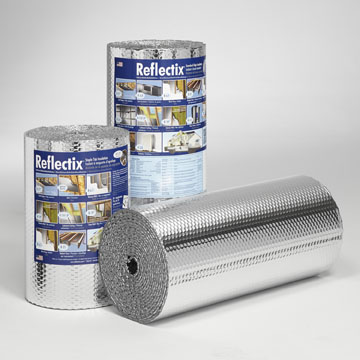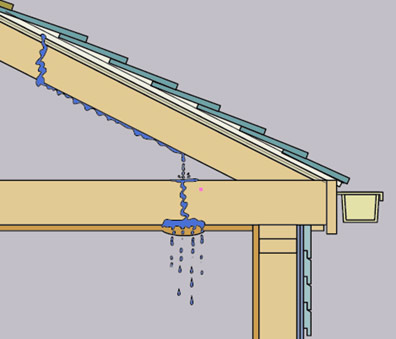Energy-Efficient Roofing Options: Eco-friendly roofing materials and technologies that help homeowners
In today’s world, energy efficiency has become a paramount concern for homeowners seeking sustainable living solutions. As we strive to reduce our carbon footprint and lower energy consumption, it is crucial to consider our roofs’ impact on overall energy efficiency. The roof is vital in shielding our homes from the elements, but it also holds significant potential for reducing energy consumption. This blog by NasaX Roofing Construction will delve into energy-efficient roofing options, shedding light on eco-friendly materials and technologies that can help homeowners in Singapore save energy and make a positive environmental impact.
By exploring various energy-efficient roofing options, we can discover innovative ways to reduce our reliance on fossil fuels, decrease carbon emissions, and create more sustainable living spaces. From reflective roofing materials that mitigate heat absorption to green roofing systems that provide natural insulation, numerous possibilities exist to enhance energy efficiency and reduce our carbon footprint.
Reflective Roofing Materials:

Reflective roofing materials, often called cool roofs, offer many benefits for homeowners seeking energy-efficient solutions. These innovative materials are designed to reflect sunlight instead of absorbing it, reducing heat buildup in the home and minimising the need for excessive air conditioning. Let’s explore the advantages of cool roofs and the various reflective roofing materials available.
Heat Reduction and Energy Savings: Cool roofs reduce heat absorption compared to traditional roofing materials. By reflecting a significant portion of sunlight, they prevent heat transfer into the building, keeping the interior cooler. With a cooler interior, homeowners can rely less on air conditioning, reducing energy usage and lowering utility bills.
Increased Comfort and Indoor Temperature Regulation: Cool roofs enhance home and building comfort. They help maintain a more consistent and comfortable indoor temperature by reflecting sunlight and reducing heat penetration.
- Extended Roof Lifespan: The ability of cool roofs to minimise heat absorption also plays a crucial role in prolonging the roofing system’s lifespan. Excessive heat can cause traditional roofing materials to deteriorate over time, leading to cracks, warping, and premature ageing. Cool roofs, experience less thermal stress, resulting in improved durability and longevity.
Multiple Types of Reflective Roofing Materials: Cool roofs encompass a range of reflective roofing materials, each offering unique benefits. Here are a few examples:
White Membranes: White or light-coloured membranes, such as TPO (Thermoplastic Olefin) and PVC (Polyvinyl Chloride), are commonly used in commercial and residential roofing. These single-ply membranes possess excellent reflectivity and durability, helping maintain cooler indoor temperatures.
Reflective Tiles: Reflective tiles, often made of clay or concrete, are an aesthetically pleasing option for cool roofs. They are designed to reflect sunlight and reduce heat absorption
Metal Roofs: Metal roofs, available in various finishes and styles, are renowned for their high reflectivity. They efficiently reflect sunlight, minimising heat transfer to the building’s interior.
Green Roofing Systems:
Green roofs, also known as living or vegetative roofs, have gained popularity as an innovative solution to enhance energy efficiency and promote environmental sustainability. The concept involves the installation of living vegetation on the roof surface, transforming what was once an underutilised space into a thriving ecosystem with numerous benefits.
Energy Efficiency through Natural Insulation: Green roofs act as natural insulators, providing additional thermal protection for buildings. The vegetation and substrate on the roof absorb and deflect solar radiation, reducing heat transfer into the building. Consequently, energy consumption for climate control is reduced, leading to lower utility bills and decreased carbon emissions.
Heat Island Mitigation and Temperature Regulation: One significant advantage of green roofs is their ability to mitigate the urban heat island effect. In urban areas, concrete and asphalt absorb heat, creating localised hotspots. Green roofs counteract this phenomenon by absorbing heat and evaporating water through transpiration. This evapotranspiration cools the air surrounding the roof and reduces ambient temperatures, contributing to a more comfortable and livable environment within cities.
Improved Air Quality and Carbon Sequestration: Green roofs improve air quality by acting as natural air filters. The vegetation and soil capture airborne pollutants and particulate matter, reducing their presence in the surrounding atmosphere. Additionally, plants absorb carbon dioxide (CO2) during photosynthesis, sequestering carbon and reducing greenhouse gas emissions.
Stormwater Management and Reduced Runoff: Green roofs offer exceptional stormwater management capabilities. The vegetation and substrate absorb rainwater, reducing the volume of runoff that would otherwise overwhelm drainage systems.
Extended Roof Lifespan and Reduced Maintenance: Installing green roofs can extend the lifespan of the underlying roofing membrane. The vegetation layer acts as a protective barrier against ultraviolet (UV) radiation, temperature fluctuations, and physical damage.
Solar Roofing:

Solar roofing has rapidly gained popularity as a renewable energy solution, revolutionising how we generate electricity for our homes. Homeowners can harness the sun’s power and enjoy various benefits by integrating solar panels directly into the roof.
Clean Electricity Generation and Reduced Reliance on Traditional Power: Solar roofing systems enable homeowners to generate clean, renewable electricity from the sun’s abundant energy. By utilising solar power, homeowners can significantly reduce their reliance on traditional fossil fuel-based electricity sources, reducing carbon emissions and mitigating environmental impact.
Financial Advantages and Energy Bill Savings: Solar roofing presents significant financial advantages for homeowners. Homeowners can significantly reduce their monthly energy bills by generating their electricity. The electricity produced by solar panels offsets the need to purchase electricity from the grid, resulting in long-term savings.
Incentives and Tax Credits: The government in Singapore and utility companies often provide incentives to promote the adoption of solar roofing systems. One significant incentive is the availability of tax credits, which can offset some installation costs. These credits vary by location but can significantly reduce the upfront investment required for solar installation. Such opportunities appear from time to time in the market.
Net Metering and Excess Electricity: Net metering is another financial benefit of solar roofing. When the solar panels generate more electricity than the household consumes, the excess electricity is fed back into the grid. In return, homeowners receive credits or compensation for the surplus energy they contribute.
Increased Property Value and Return on Investment: Solar roofing not only provides ongoing energy bill savings but can also increase the value of a property. Studies have shown that homes with solar systems sell at a premium compared to those without solar.
Insulation and Ventilation:
Proper insulation and ventilation are crucial in maximising energy efficiency within homes. They contribute to maintaining a comfortable indoor environment, reducing energy consumption, and promoting cost savings.
Insulation for Heat Transfer Prevention: Insulation is a crucial component in reducing heat transfer between the interior and exterior of a building. It acts as a thermal barrier, preventing heat escape during colder months and minimising heat gain during warmer months
Comfort and Temperature Regulation: Proper insulation reduces heat transfer and helps maintain a consistent and comfortable indoor temperature. It minimises temperature fluctuations, preventing winter drafts and cold spots and reducing summer heat buildup.
Role of Roof Ventilation in Heat Reduction: Proper roof ventilation reduces attic or roof space heat buildup. During hot weather, the sun’s rays can heat the roof, causing the trapped air in the attic to become extremely hot. Without proper ventilation, this heat can radiate into the living areas below, increasing the cooling load on air conditioning systems.
Improved Air Circulation and Indoor Air Quality: In addition to heat reduction, proper roof ventilation enhances overall air circulation within the home. Stagnant air in the attic can lead to moisture buildup and the growth of mould and mildew, which can impact indoor air quality and the health of occupants.
Energy Savings and Environmental Impact: By maximising insulation and ventilation, homeowners can significantly reduce their energy consumption and carbon footprint. Proper insulation minimises the need for heating and cooling systems, reducing reliance on fossil fuels and lowering greenhouse gas emissions.
Sustainable Roofing Materials:
Recently, there has been a growing demand for eco-friendly roofing materials prioritising sustainability and minimising environmental impact. Several options, such as recycled shingles, reclaimed wood, and sustainable composite materials, have emerged as viable alternatives. Let’s explore the benefits of these eco-friendly roofing materials and why they are gaining popularity
Recycled Shingles: Recycled shingles are made from reclaimed materials, such as post-consumer recycled plastic or rubber. By using recycled content, these shingles help reduce waste by diverting materials from landfills. They also conserve natural resources since they require fewer virgin materials for production.
Reclaimed Wood: Reclaimed wood for roofing is sourced from salvaged or repurposed timbers. Using reclaimed wood helps minimise deforestation by extending the lifespan of existing wood resources. This sustainable option offers a unique aesthetic appeal, with each piece carrying its history and character.
Sustainable Composite Materials: Composite roofing materials are manufactured using recycled materials and environmentally friendly components, such as recycled plastics, rubber, and renewable resources like bamboo or cellulose fibres. These materials offer excellent durability, longevity, and resistance to weathering, making them a viable long-term roofing solution.
Conclusion:
Energy-efficient roofing options offer numerous benefits for homeowners, including potential energy savings and reduced environmental impact. By opting for eco-friendly materials such as recycled shingles, reclaimed wood, and sustainable composites, homeowners can contribute to waste reduction, resource conservation, and a healthier environment. These materials also provide durability, longevity, and enhanced aesthetics. Homeowners in Singapore are encouraged to explore these energy-efficient roofing options and consider their unique benefits. Additional resources and guidance can assist them in selecting the most suitable eco-friendly roofing solution for their homes, ensuring a greener and more energy-efficient future.
About NasaX Roofing Construction, Singapore
NasaX Roofing Construction stands as a reliable name in the roofing industry in Singapore, known for expertise and dedication. We have a track record of excellence and offer top-tier roofing solutions that combine quality craftsmanship and innovative techniques. Whether it’s roof repairs or renovations, NasaX Roofing Construction ensures a strong, secure, and aesthetically pleasing roof over your head.







